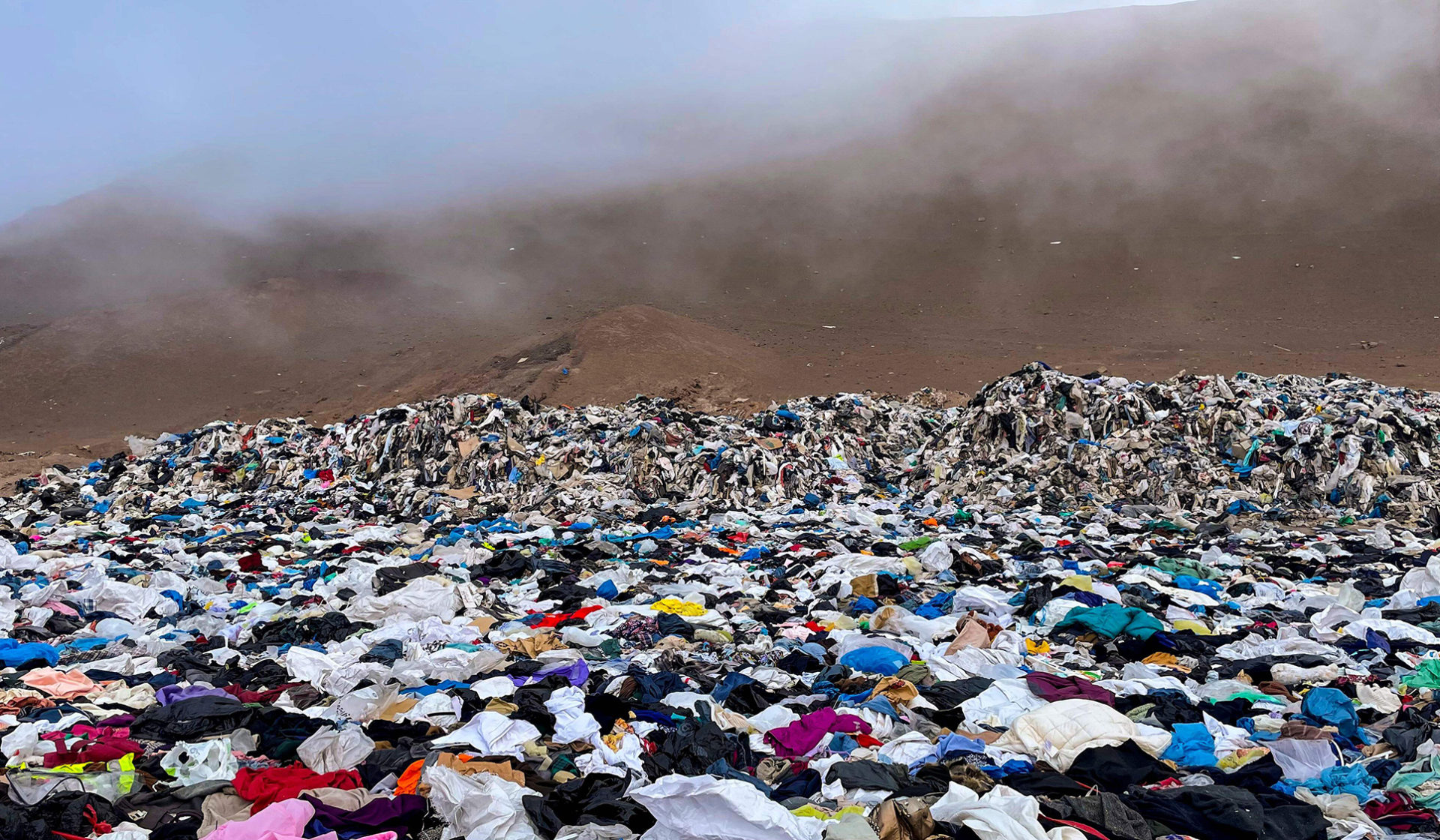Deep within Chile’s arid Atacama, new dunes are forming – not of sand, but of thousands of tonnes of unsold clothing from across the globe.
By now, I’m sure you’re already well-aware that the world is literally drowning in clothes.
Though recycling programmes have existed for decades now, with little means of recycling jeans or dresses, of the 100 billion garments bought annually, 92 million tonnes of them get thrown out.
By just 2030, that figure is expected to increase by over forty million.
Yet global production continues to surge, doubling between 2000 and 2014 (according to The Economist), as does rampant consumption, with the average consumer purchasing 60% more clothes annually and keeping them for half as long as they did 15 years ago.


It’s an environmental disaster that, despite Cop26 and the latest IPCC report urging the industry to change its ways – and change them soon – shows no signs of abating.
Namely due to a recent finding that the world’s driest desert (and one of the most inhospitable places on Earth) has become a swiftly swelling graveyard of fast-fashion lines past.
Located in Chile, the arid Atacama is increasingly suffering from environmental pollution, habitat loss, and water contamination brought about by our obsession with following trends.
The country, which has long been a hub of second-hand clothing made in Asia and passed through Europe, sees some 59,000 tonnes of unwanted garments arrive each year at its northern Iquique port to be sold throughout Latin America.


What isn’t bought or smuggled – a staggering 65% to be exact, the equivalent to the weight of nearly 27,000 compact cars in scrapped fabric – finds its way to Atacama, ending up in rubbish piles you could easily mistake for sand dunes.





















